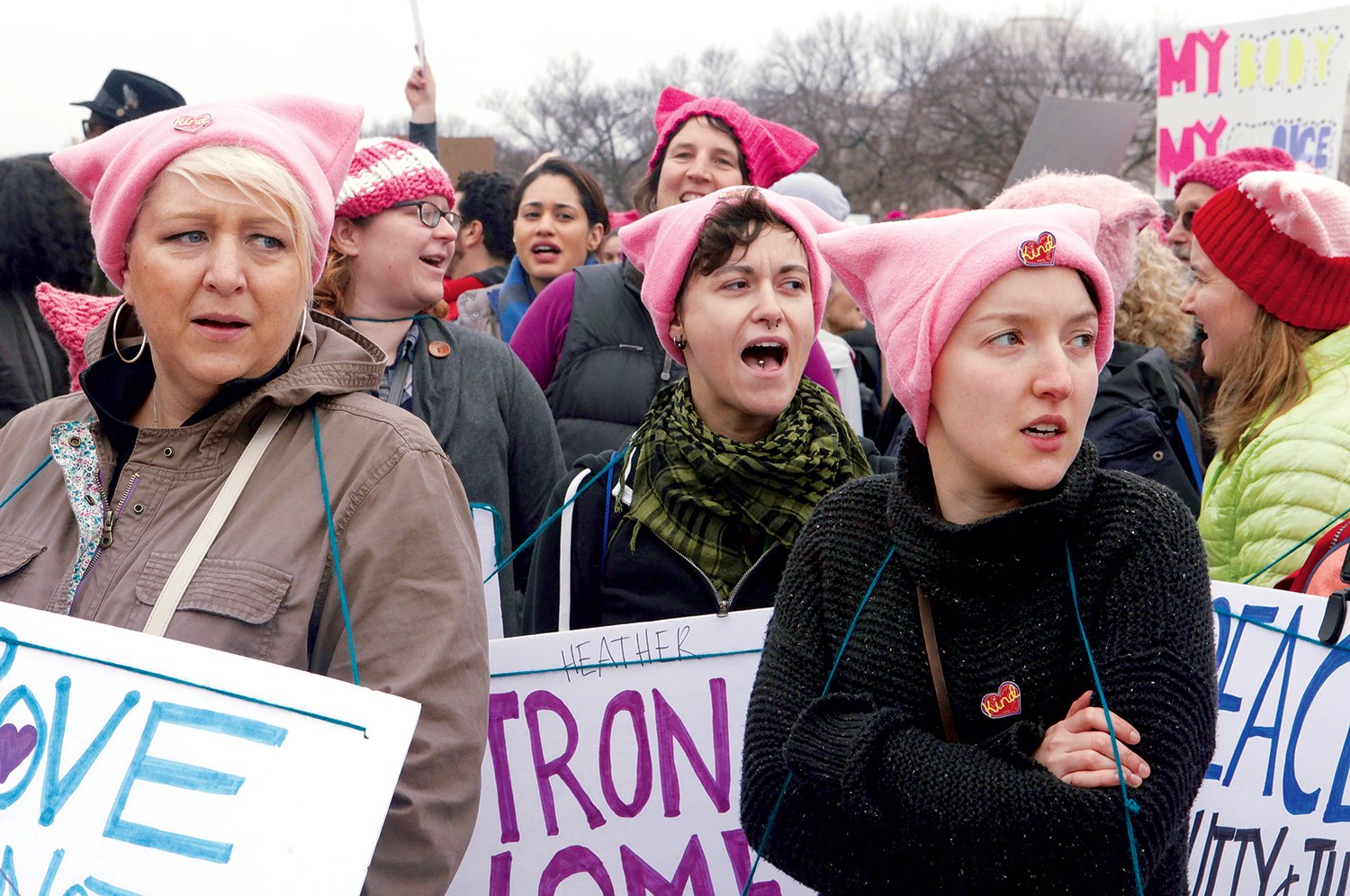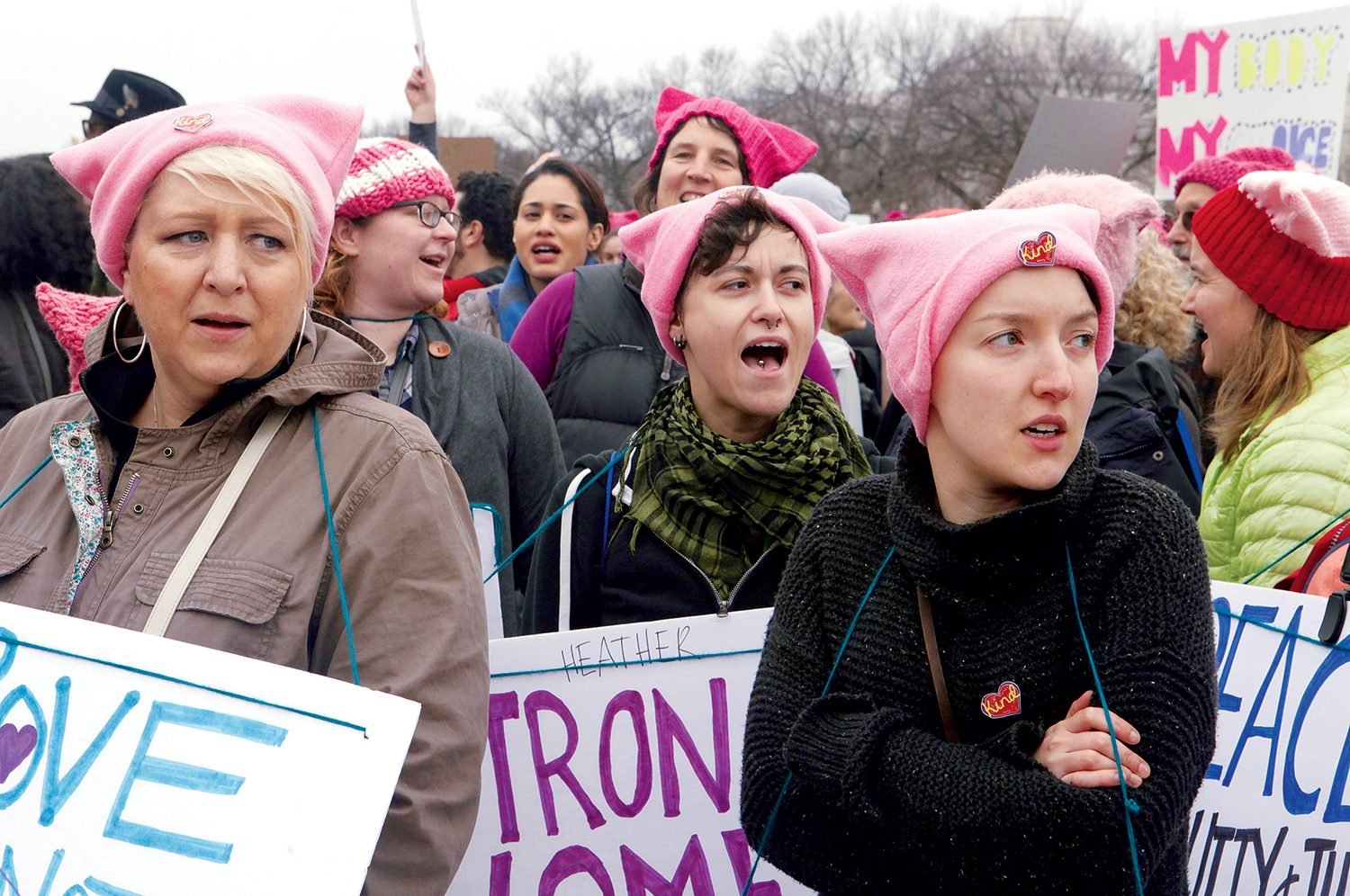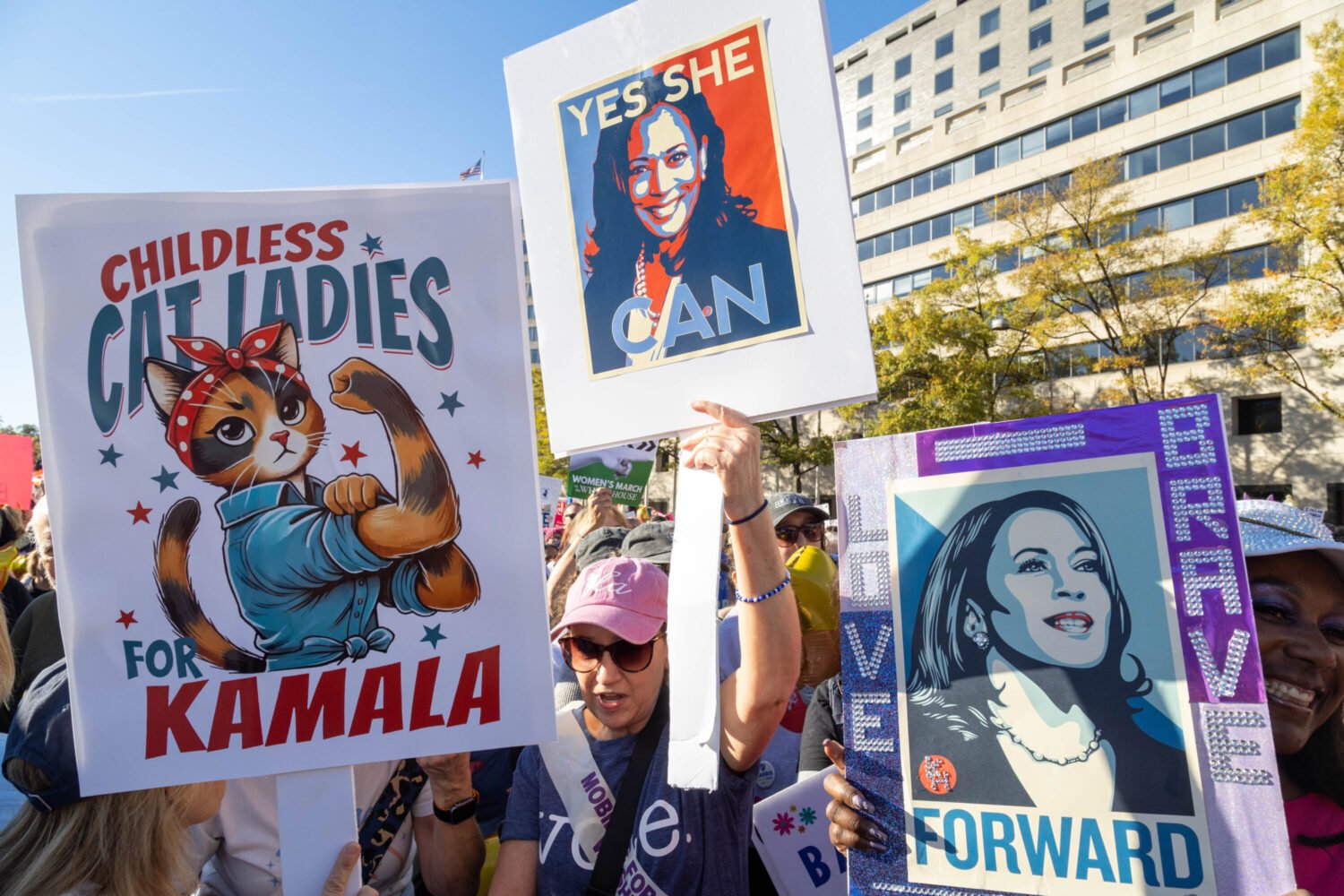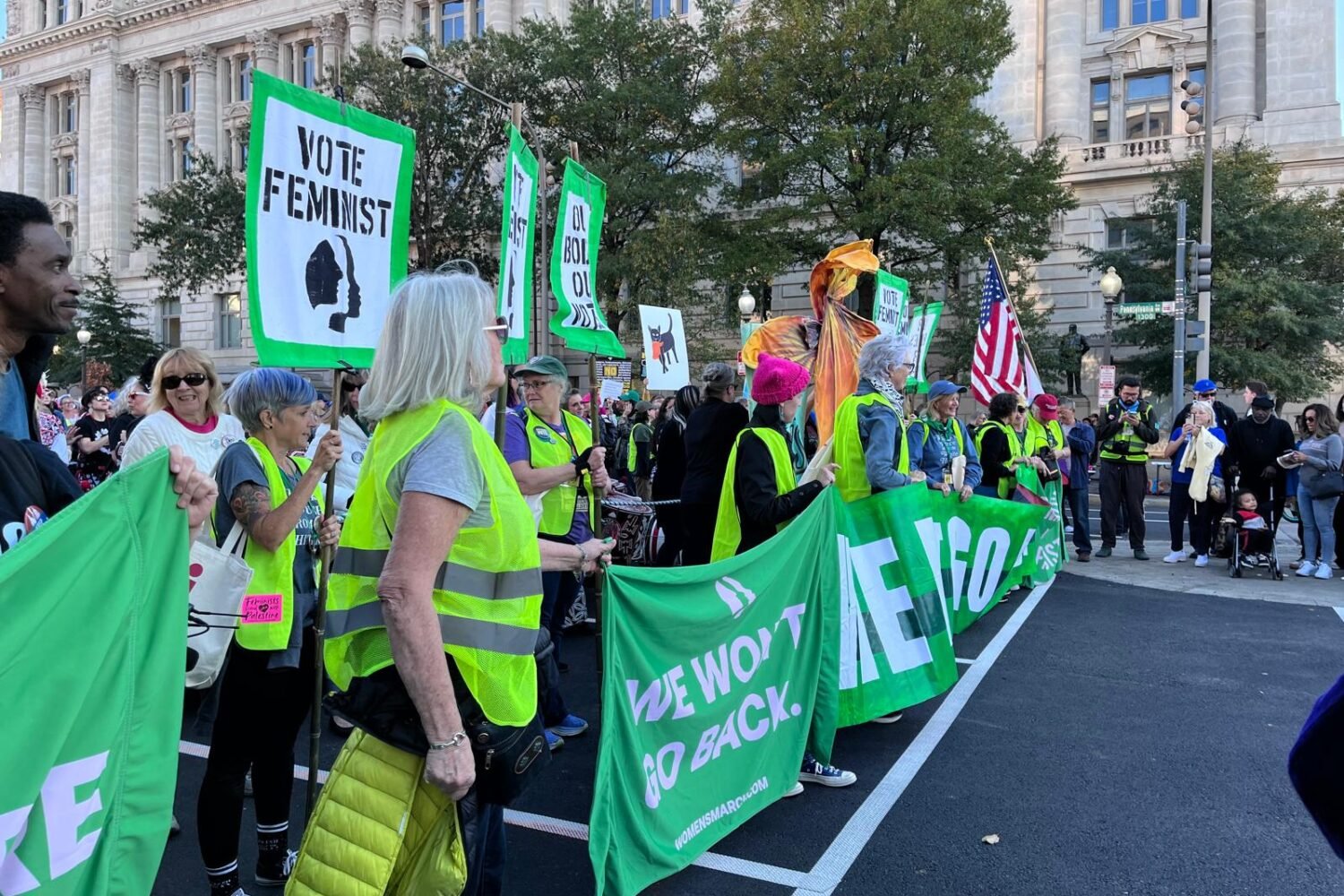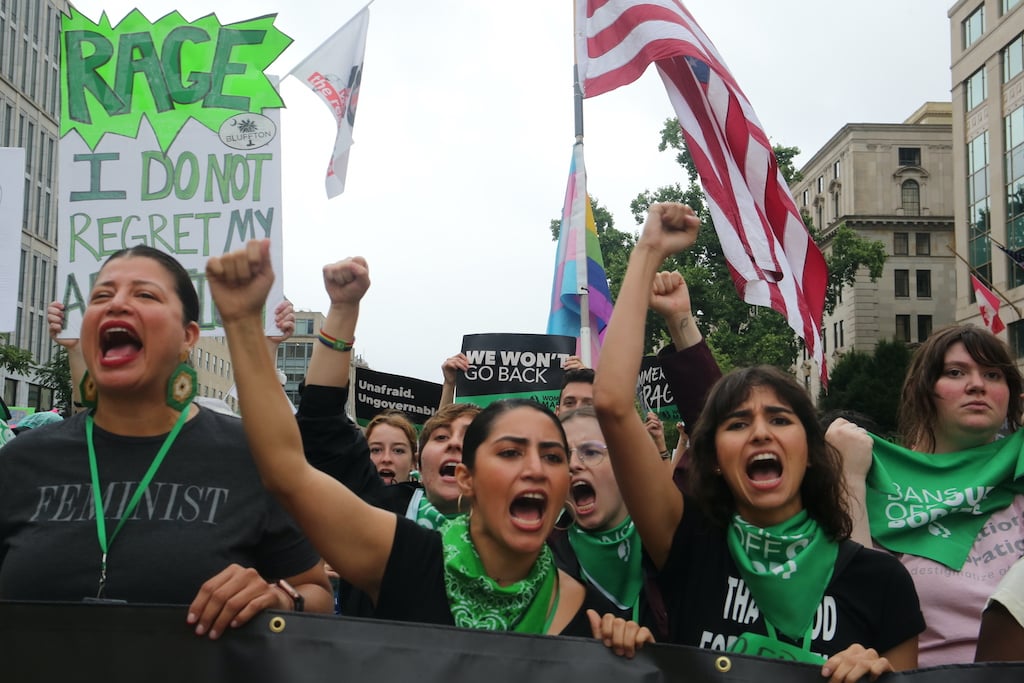The Women’s March will return to Washington this Saturday, nearly five years after its gargantuan debut the days after Donald Trump’s inauguration. With the former president no longer in office—but with Roe v Wade in danger of being overturned by Trump’s three appointees—the 2021 march focuses on reproductive rights.
“Together, we’re building a movement that centers the voices of the most marginalized, and we’re ready to bring our collective voice to rallies across the country,” said Women’s March executive director Rachel O’Leary Carmona. “Because we’ll only overcome the unprecedented effort to override our rights with a unified effort to preserve them.”
This year’s march takes place just two days before the Supreme Court reconvenes for the October term. As in 2017, there will also be other marches and events in several cities across the United States, and all of them are expected to draw thousands of people. Beyond the Women’s March organization itself—which has battled internal divisions in the years since 2017—the march is being organized by the Service Employees International Union, Planned Parenthood Federation of America, and other women’s rights organizations.
Here’s what you need to know about Women’s March on Saturday.
When and where is it?
Attendees can start gathering at Freedom Plaza for pre-rally faith service at 10 AM. The gathering, lead by Yvonne Proverbs Briggs, Rabbi Tamara Cohen, and Kohenet Keshira haLev Fife, will reflect on the people of faith who are fighting and hoping for reproductive justice. There will be a rally at noon, and the crowd will begin marching at 1:30 PM from Freedom Plaza along Pennsylvania Avenue and Constitution Ave towards the Supreme Court building. Speakers haven’t been finalized yet.

How can I get there?
Since there will be street closures, it is recommended that you take public transportation to the gathering space. You can use the Gallery Place/Chinatown, Navy Memorial, Metro Center, McPherson Square, and Federal Triangle stations to enter the area. However, you should use the Union Station or Capitol South Metro stations to leave the march.
How many people are expected to attend?
According to the National Park Service, the permit for the event lists an expected attendance of 10,000 people. This is a similar number to last year’s march, but still a sharp decline from the hundreds of thousands of people that attended the march in 2017.
What should you bring?
You are encouraged to bring comfortable shoes, water, a portable phone charger, a mask, your own hand sanitizer, snacks, and a small bag with your ID. If you happen to forget your mask and hand sanitizer, those items will be provided on the on the day of the march.
What are you not allowed to bring?
Organizers have asked people to avoid some staples of recent pro-choice marches: Handmaid’s Tale outfits and coat-hanger iconography. On its website, the Women’s March says that coat hangers “reinforce the right wing talking points that self-managed abortions are dangerous, scary, and harmful,” and that “Handmaid’s Tale” imagery characterizes the idea that barriers to reproductive rights are “dystopian.” Weapons and drugs—including cannabis—are also not welcome.
Are there other marches planned elsewhere?
The Women’s March plans to host more 600 “sister marches” and similar events on Saturday. Locally, there will be a march in Baltimore, as well as rallies in Frederick and Annapolis.
Can you watch remotely?
If you feel still uncomfortable with being around large crowds, the Women’s March will be live streaming events in all 50 states across the country.

